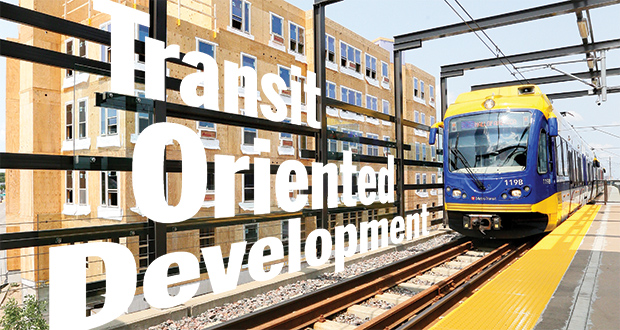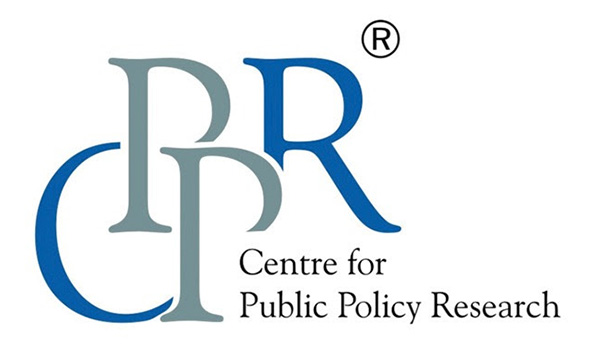Articles

Making Sense of Ease of Doing Business Rankings
November 3, 2016
“How U.S Elects it’s President”: Vinny Davis
November 5, 2016Will Transit Oriented Development congest our cities?

The Delhi Development Authority (DDA) has taken up Transit Oriented Development (TOD) initiatives, which are intended to redistribute the density in alignment with the areas that are catered by mass transit projects in the city. This project has the potential to change the entire landscape of the capital and the scope for achieving high densities without compromising the living standards. According to a study by the World Bank, cities in developing countries are showing strong economic growth with the negatives of low-density sprawl, traffic congestion, air pollution and so on. The present scenario of urban development in India usually results in poor living conditions for a large population in the urban centres. The population density of a city is often used as a parameter to assess its living standards and that is why any provision for increasing the Floor Space Index (FSI) is looked at with apprehension. Common belief is that increasing FSI will only result in higher congestion levels in the city.
In this context, let us compare the city of Delhi to the city of New York. The city of New York, as per 2010 census, has a population of 8.5 million with a population density of 10,500 persons per square kilometre. The Indian megacity of Delhi, as per 2011 census, has a population density of 19,659 persons per square kilometre. Even though New York has a much lesser population density than that of Delhi, the former is far ahead of the latter in terms of permissible FSI. The FSI cap in New York is 15, whereas for Delhi it is around two to three. This indicates that FSI is not the only reason that is contributing to the densification and poor living conditions in a city. Another example is Hyderabad, where there are no FSI restrictions. The city has a population density of 18,172 persons per square kilometre, which is lower than that of Mumbai.
High population density in Indian megacities is a result of the dense low-rise development with low per capita floor area. Under dense low-rise development, it is difficult to attain service standards for utility services because of the complicated layouts and lack of space available. High-rise development enables to achieve higher floor space densities, which can eventually result in better utilisation of land and improvement in living conditions. Assume a plot of area 1000 squaremetre in a city with permissible FSI value of two and maximum ground coverage of 90 per cent. The maximum floor area that can be developed here is 0.9 X 2 X 1000 = 1800 square metre. For the same piece of land, with FSI provision of six, the area required for constructing 1800 square metre of floor space is 300 square metre, leaving an area of 700 square metre for other purposes such as creation of recreational spaces or amenity spaces. This provision enables to achieve higher efficiency and quality standards in utility services, but at the same time, will require the use of advanced technologies. When it comes to transportation in high-density low-rise areas, we generally observe narrow and chocked lanes in the interior portion of layouts and wider but congested roads in the exterior. The percentage share of land under transportation is very less here and it is difficult to acquire land for widening of roads. High-rise development that requires less space for transportation within the layout enables local governments to develop wider roads, which will facilitate non-motorised transit modes and improve the overall connectivity of the layout to other parts of the city, thereby improving the overall traffic scenario.
TOD is an idea that is aimed at facilitating maximum living space and working space near mass transit centres. This will considerably reduce the dependence on private vehicles, which will lead to decongesting the roads. TOD is not about increasing the overall density of a city but it determines how the density is distributed. In Indian cities with the current FSI regulations, irrespective of transportation facilities available, we have a uniform distribution of density in terms of floor space. This results in increasing price of land near the transit centres. Provision of additional FSI for TOD will also result in increasing unit price of land, but the cost of accommodation near transit centres will come down as the floor space increases.
It is the duty of the governing body to ensure that development will result in the creation of more public spaces and increase diversity in landuse. Providing with higher FSI for agglomerated plots, if a fixed proportion of the total area is reserved for public use, can be used as an ideal strategy to create more public spaces. Introduction of exclusive pedestrian zones is another positive move towards encouraging mass transit. This will also help in bringing down the pollution levels of a city. The next step is to keep up with the growing demand of infrastructure and amenities in TOD zones. As density increases, there will be higher demand for utilities and infrastructure provisions, but this can actually result in lowering the per capita cost requirement, as the per capita area to be covered is comparatively less.
In the case of Delhi, to a certain extent, TOD can offer solutions to some of the major problems that the capital city is facing now. The revenue that DDA can generate from the levies collected from the provision of additional FSI will be an important source of income for the government. As of now, not many Indian cities have taken upsuch large-scale initiative to capture the increase in land value.Hence, if implemented successfully, Delhican set an example for other cities. The TOD model can also increase ridership in mass rapid transit systems, as there is no issue of last mile connectivity. One of the major reasons why people prefer to use private vehicles is the issue of last mile connectivity that the city authorities have failed to address effectively.
While implementing the TOD scheme in Delhi, DDA should ensure that there is mixed land use development. Concentrating on residential or commercial buildings to a particular point will not favour the market trends of the city. A detailed study has to be conducted to identify the major growth centres and the type of growth. Then, the new developments have to be shifted towards the transit centres, decongesting the growth centres and keeping up with market demands simultaneously. With a strong policy framework and financial backing, TOD can act as major tool for the rejuvenation of Delhi.
In the India scenario for TOD, funding is a huge barrier .Even if a city manages to find investors, several approvals are required before the final sanction of the project. The governments at the local level do not have a funding source to initiate large-scale transit development projects and are very much dependent on Central or State schemes. Hence, newly formed bodies such as Metro Rail Corporation will work as separate agencies and will have interests that contradict the master plans prepared by the local governing body. In Delhi itself, the approval of more than 13 departments is necessary for a layout plan of a project under Integrated TOD scheme. Ideally, Indian cities should have the financial power to develop infrastructures such as intra city mass transit systems on their own. Since that is not possible under the current framework within which our cities work, at least the local governments should be able to work together with the transit development authority to get maximum benefit out of these projects and use these projects as a solution for the prominent issues they face.
Abhishek Das is Research Assistant at CPPR-Centre for Urban Studies. Views expressed by the author is personal and does not represent that of CPPR.
This article was first published in The Dialogue
Featured Image Source: Finance & Commerce

